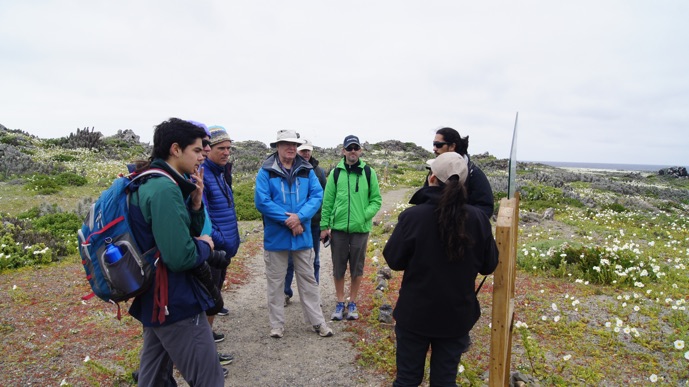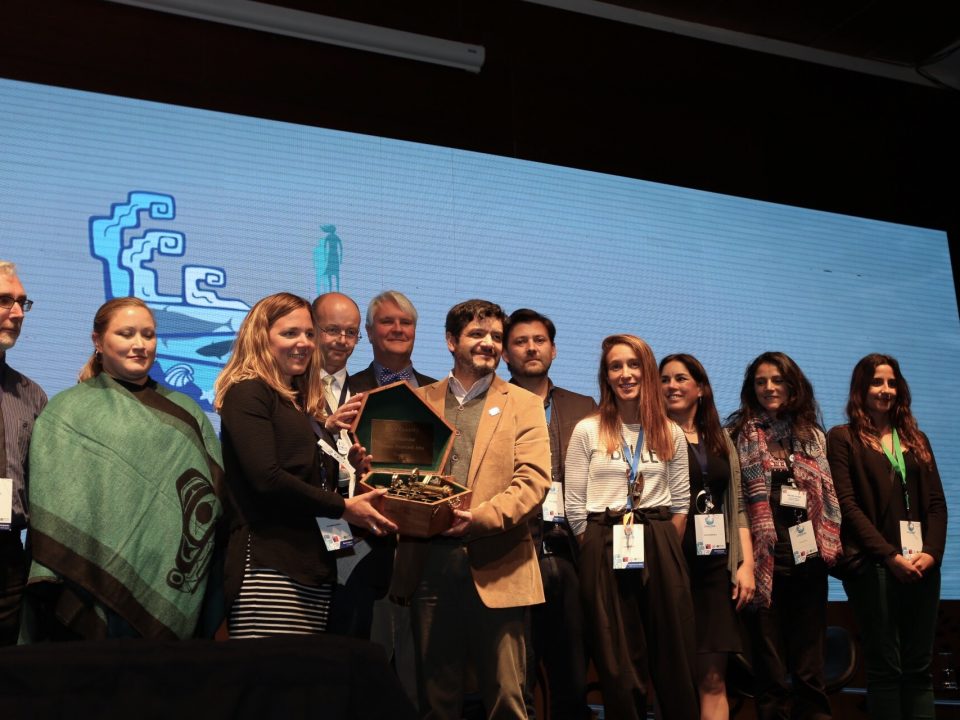-
A visit to the Choros and Damas Islands marine reserve in Coquimbo, Chile, marked the beginning of the 4th International Marine Protected Areas Congress (IMPAC 4) Saturday, September 2. The visits will continue tomorrow and include an astronomical trip to Cerro Tololo.
A trip lead by Rangers and local experts to the islands Choros and Damas Marine Reserve in Northern Chile, -including navigation and a hike- were part of the initial activities of the International Marine Protected Areas Congress, IMPAC 4, opened today September 2, and ending Friday 8 in La Serena and Coquimbo, Chile.
The visit, that includes a gastronomic experience by CocinaMar Foundation, was attended by experts from the Marine Protected Area Agency Partnership (MPAAP) and specialists from Australia, the United States, Canada and Mexico.
IMPAC 4 is a global gathering of more than 1000 experts, community representatives, practitioners and authorities, who will discuss relevant topics regarding the oceans.
The Choros and Damas Islands form the homonimmus Marine Reserve, created on April 28, 2005. They also constitute, along with Chañaral Island (Atacama Region), the Humboldt Penguin National Reserve, created on January 3, 1990.
Among the mammals (terrestrial and aquatic) that inhabit the reserve are chungungo (Lontra felina), South American sea lion (Otaria flavescens), South American fur seal (Arctophoca australis), bottlenose dolphin (Tursiops truncatus) and the presence of whales and sperm whales, depending on the season. The most emblematic bird of this Reserve is the Humboldt penguin (Spheniscus humboldti), although there are also Peruvian Diving-Petrels (Pelecanoides garnotii), Red-legged cormorants (Phalacrocorax gaimardi), Guanay cormorants, (Phalacrocorax bougainvillii) all these species protected and in a a state of conservation categories. In addition, populations from hydrobiological resources of interest are protected to artisanal fisheries, such as the Chilean abalone (Concholepas concholepas), limpets (Fisurella spp.) and sea urchin (Loxechinus albus).
The field trips will continue tomorrow, with a new group of scientists going to the islands Choros and Damas, and a visit to the Cerro Tololo Astronomical Center, that will emphasize the relationship between light pollution and the behavior of marine species.




